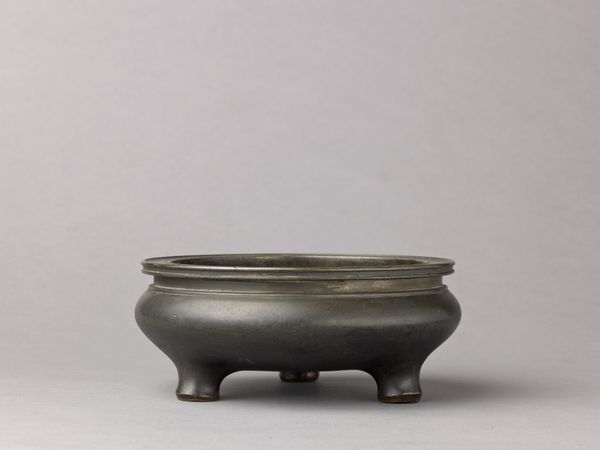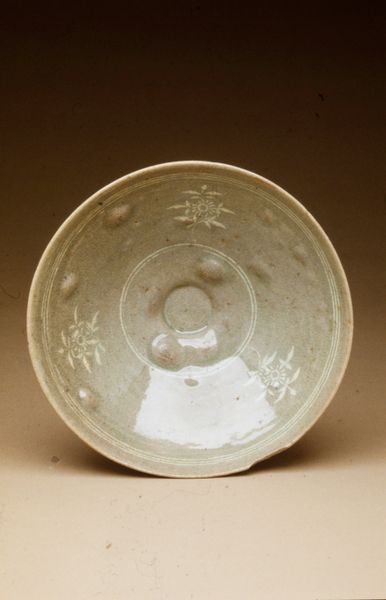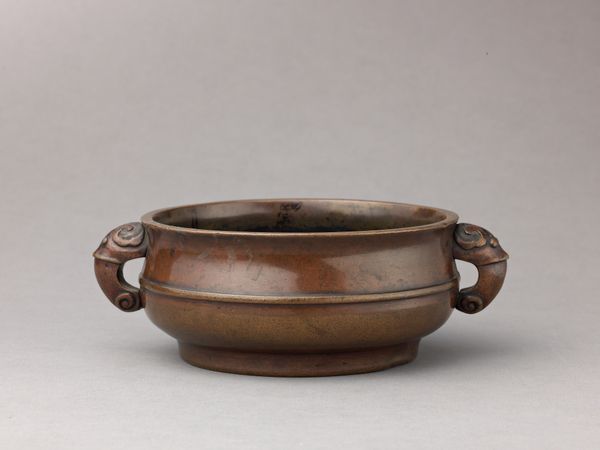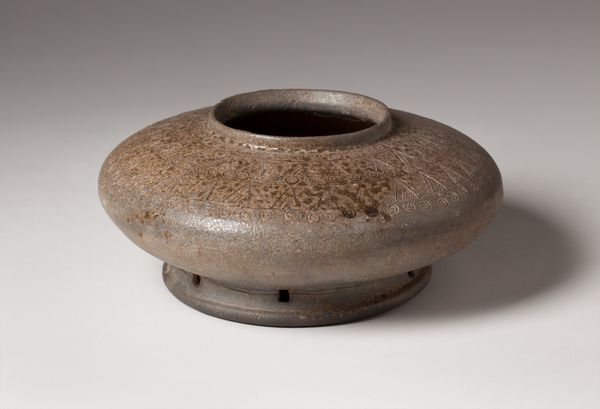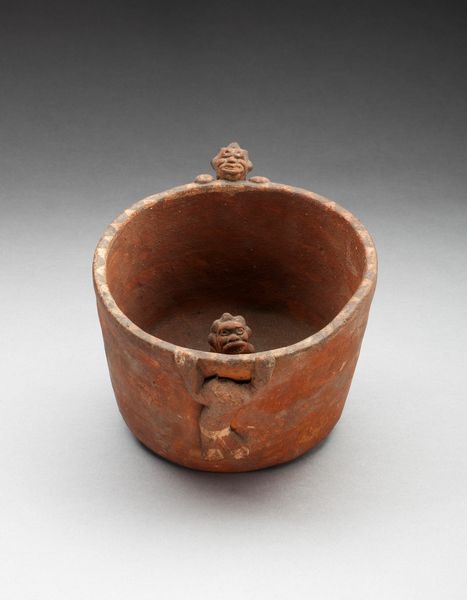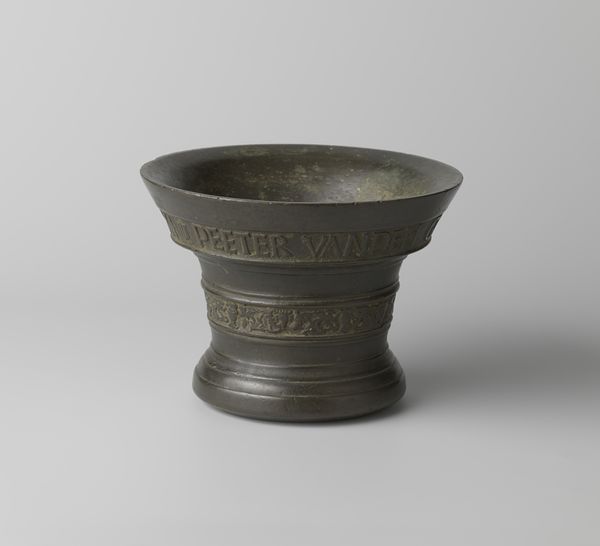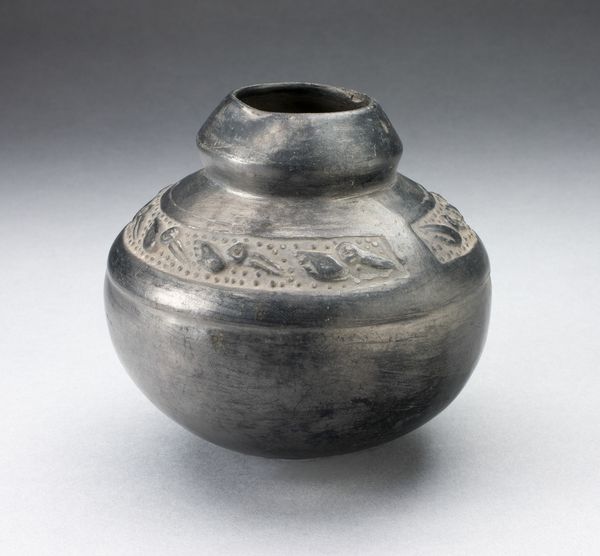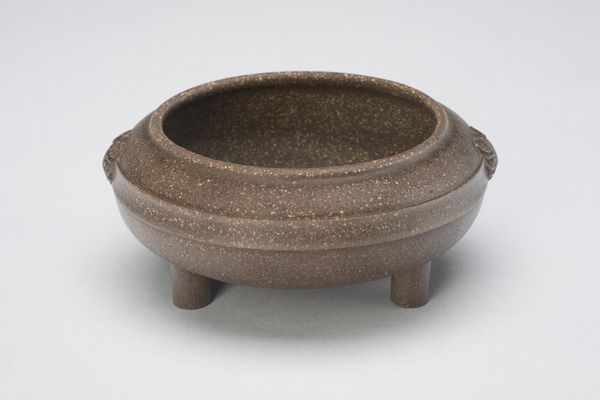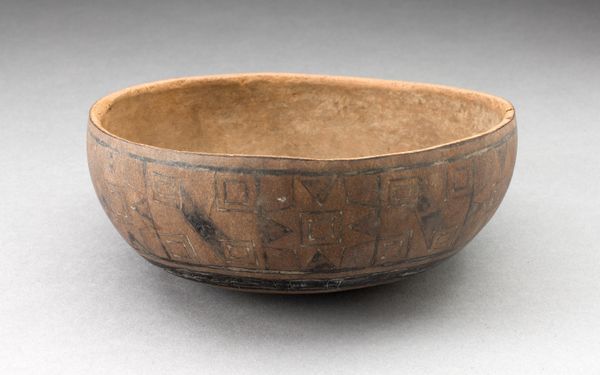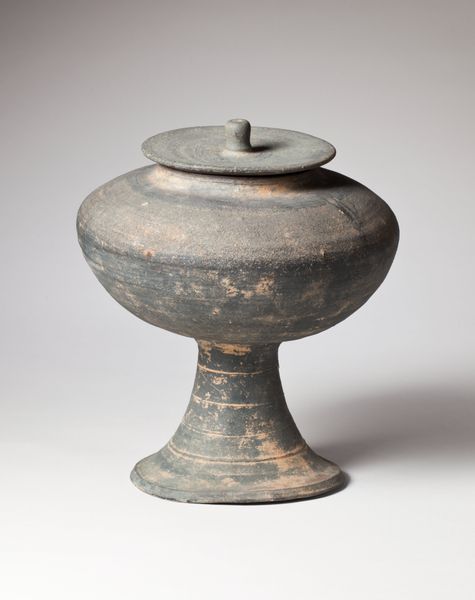
bronze, sculpture
#
asian-art
#
bronze
#
sculpture
#
islamic-art
#
decorative-art
Dimensions: H. 19 cm. Diameter: 32.7 cm.
Copyright: Public Domain
Editor: This bronze censer, likely from the 19th century, is quite striking. Its simple form, adorned with those intricate Chinese characters, feels both functional and deeply symbolic. How do you interpret this work, particularly given its cultural context? Curator: It's a potent object, isn't it? To truly understand this censer, we need to consider the historical forces that shaped its creation and use. Censors like these were central to ritual practices in imperial China, not only within religious contexts like ancestor veneration, but also increasingly as decorative objects displaying the wealth and power of those who owned them. The very material—bronze—speaks to legacies of power and control. Editor: That's fascinating! So, the choice of bronze itself carries a weight of cultural significance. Curator: Precisely. And think about the labor involved in its creation, from mining the ore to the skilled craftsmanship of the artisans. What about the characters around it - what meaning do you infer from those? Editor: From what I know, they are auspicious, referencing happiness or fortune, maybe blessings, therefore reflecting the owner's aspiration. But can it also have religious use considering that there is a link to Asian art? Curator: Exactly! This highlights the entanglement of spirituality, social status, and material culture. Remember, objects like this aren't passive; they actively shaped and reinforced hierarchies. Does viewing this object through this lens impact your original perception? Editor: Definitely. I initially saw it as beautiful, almost serene. But understanding its history, particularly concerning power structures, it complicates that initial view, making me think about cultural appropriation. Curator: These contradictions are vital. Art exists within a web of social and political forces. Analyzing that can enable change and foster deeper understanding. Editor: That's really shifted how I see not only this censer but decorative art generally! Thanks for opening my eyes. Curator: My pleasure. Keep asking those critical questions – they are essential to art history.
Comments
No comments
Be the first to comment and join the conversation on the ultimate creative platform.
